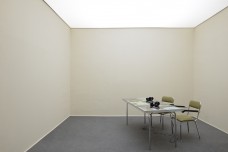
The noise of reception
Essay
Montreal-based writer and curator Vincent Bonin responds to Tris Vonna-Michell’s exhibition, Capitol Complex, at Gallery TPW.

hi how are you
Writer in Residence:
Tiziana La Malia
Gallery TPW Writer in residence Tiziana La Melia’s hi how are you adapts the format of an in-flight travel magazine as a model for building a narrative out of episodic reportage. La Melia asks reader to picture her “scribbling the answers in sky-high hovering movement with images from a birds eye point of view, crackling long distance phone calls to Nadia Belerique and Bojana Stancic”
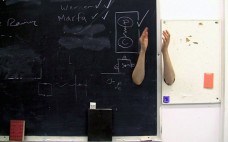
Notes on Back to School:
A Conversation About Making an Open Classroom Happen
Posted November 21, 2013Art educator and writer Amber Yared responds to Vesna Krstich’s curatorial residency, Back to School, a series of workshops, screenings, lectures, events and conversations focused on alternative pedagogy. In this post Yared sits down with choreographer Ame Henderson to speak about Henderson and Krstich’s co-facilitated workshop, “Making an Open Classroom Happen”.

Notes on Back to School:
An Institution Is a Thing Made of People and An Institution Is a Thing Made of Space
Posted October 24, 2013Art educator and writer Amber Yared responds to Vesna Krstich’s curatorial residency, Back to School, a series of workshops, screenings, lectures, events and conversations focused on alternative pedagogy. In this post Yared reflects on the assumed rigidity of institutionalized education and pedagogic power dynamics in response to a public Skype conversation with Jakob Jakobsen.

Ending an Encounter:
Some notes on the end of a residency
Blog Post
Posted October 22, 2013In this blog post Gabrielle Moser reflects on her time as Curator in Residence at Gallery TPW.

Show’s Over
Essay
Guest curator Jon Davies responds to Wu Tsang’s exhibition, Show’s Over, at Gallery TPW.

Notes on Back to School:
Zmijewski’s Choices
Posted September 25, 2013Art educator and writer Amber Yared responds to Vesna Krstich’s curatorial residency, Back to School, a series of workshops, screenings, lectures, events and conversations focused on alternative pedagogy. In this post Yared examines ideas of destruction and creation, non-verbal compliance and crappiness in Artur Zmijewski’s Choices .

Back to School
Curatorial Statement
Essay
Guest curator Vesna Krstich introduces the research interests driving the Back to School residency.

Notes on Back to School:
A Partial Re-enactment
Posted September 19, 2013Art educator and writer Amber Yared responds to Vesna Krstich’s curatorial residency, Back to School, a series of workshops, screenings, lectures, events and conversations focused on alternative pedagogy. In this post Yared examines practices of re-enactment and reinvention.
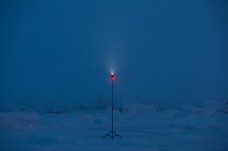
Wanting Images:
What does a landscape want?
On illumination as a hermeneutics of looking
Posted September 13, 2013Writer and scholar Sara Matthews contributes a series of blog posts to TPW R&D Online. Entitled Wanting Images, the series explores the relation between art, pedagogy and desire. Taking the form of a conversation with various images, visual projects and curatorial strategies, the intent is to explore the notion of what constitutes a pedagogical encounter in looking and to consider the methodological dilemmas raised by such provocations. In this post Matthews explores relationships between power, landscape, human subjectivity and technology while looking at Andrew Wright’s “Illuminated Landscapes.”

Wanting Images:
on looking as free association
Posted August 15, 2013Writer and scholar Sara Matthews contributes a series of blog posts to TPW R&D Online. Entitled Wanting Images, the series explores the relation between art, pedagogy and desire. Taking the form of a conversation with various images, visual projects and curatorial strategies, the intent is to explore the notion of what constitutes a pedagogical encounter in looking and to consider the methodological dilemmas raised by such provocations. In this post Matthews experiments with free associative reading methods while looking at the work of Lieko Shiga.

Notes on the Robert Flaherty Film Seminar
Posted July 24, 2013.Curator and writer Jon Davies reflects on the 59th Robert Flaherty Film Seminar, History is What’s Happening curated by Pablo de Ocampo.

Wanting Images:
In the Playroom
(on looking as pedagogy)
Posted July 17, 2013Writer and scholar Sara Matthews contributes a series of blog posts to TPW R&D Online. Entitled Wanting Images, the series explores the relation between art, pedagogy and desire. Taking the form of a conversation with various images, visual projects and curatorial strategies, the intent is to explore the notion of what constitutes a pedagogical encounter in looking and to consider the methodological dilemmas raised by such provocations. In this post Matthews questions pedagogic potentials in Jonathan Hobin’s “In the Playroom.”
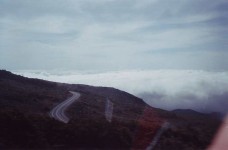
T.H.T.K. (Toronto)
Essay
Gallery TPW’s curator in residence Gabrielle Moser reflects on Jason Lazarus’ T.H.T.K. installation at Gallery TPW.
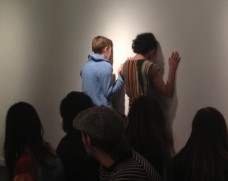
Jenn Goodwin
Reflections on a Residency
Choreographer Jenn Goodwin reflects on her ongoing research residency with Gallery TPW.

Wanting Images:
On looking at
“difficult photographs”
Posted June 4, 2013Writer and scholar Sara Matthews contributes a series of blog posts to TPW R&D Online. Entitled Wanting Images, the series explores the relation between art, pedagogy and desire. Taking the form of a conversation with various images, visual projects and curatorial strategies, the intent is to explore the notion of what constitutes a pedagogical encounter in looking and to consider the methodological dilemmas raised by such provocations.
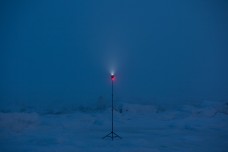
Wanting Images:
Sleeping Soldiers
Posted May 16, 2013Writer and scholar Sara Matthews contributes a series of blog posts to TPW R&D Online. Entitled Wanting Images, the series explores the relation between art, pedagogy and desire. Taking the form of a conversation with various images, visual projects and curatorial strategies, the intent is to explore the notion of what constitutes a pedagogical encounter in looking and to consider the methodological dilemmas raised by such provocations.
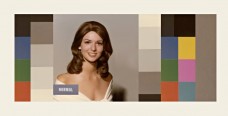
Yes, but (Some Thoughts on Broomberg and Chanarin’s New Work)
Essay
Cape Town-based writer Sean O’Toole responds to Adam Broomberg and Oliver Chanarin’s To Photograph The Details of a Dark Horse in Low Light at Gallery TPW and across Canada.

The Wanderer
Essay
Chicago-based film scholar and curator Amy Beste responds to Laure Prouvost’s multi-channel video and installation The Wanderer at Gallery TPW.

Talking About
What We Talk About When We Talk About History
Posted April 5, 2013Artist and writer Sharlene Bamboat responds to What We Talk About When We Talk About History, a screening series curated by Pablo de Ocampo. In this post Bamboat looks at the circulation of power within the film program.
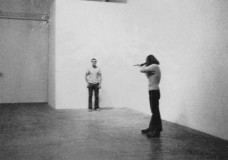
Talking About
What We Talk About When We Talk About History
Posted April 3, 2013Artist and writer Sharlene Bamboat responds to What We Talk About When We Talk About History, a screening series curated by Pablo de Ocampo. In this post Bamboat reflects on the ways in which we transmit history.

Enframing an Invisible Violence
Writer and curator Cora Fisher contributes with her thoughts on the Woodstock launch of Invisible Violence, held in conjunction with a conversation with Judy Ditner, Thomas Keenan and Liz Park.

Doing the Difficult Work
Montreal-based writer Amber Berson shares her reflections on the workshop titled “The Form of Violence / The Form of Exhibition” presented by Liz Park for Invisible Violence at CEREV (The Centre for Ethnographic Research and Exhibition in the Aftermath of Violence) at Concordia University on February 27.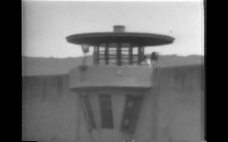
Talking About
What We Talk About When We Talk About History
Posted March 20, 2013Artist and writer Sharlene Bamboat responds to What We Talk About When We Talk About History, a screening series curated by Pablo de Ocampo. In this post Bamboat reflects the symbolic privilege of power’s gaze.

Curation as Interruption
Sara Matthews, Assistant Professor in Global Studies at Wilfrid Laurier University, responds to a conversation between Gabrielle Moser and Liz Park at the Toronto launch of Invisible Violence.

The Expanded Image
Annie MacDonell’s third year Ryerson photography class came to TPW to engage with Oliver Husain’s mutable exhibition Pandy Ramada’s Bendable Displex. The students were asked to use the exhibition as a way to investigate the possible points of intersection between photography and sculpture.

Slippery Bond
Vancouver-based artist and writer Sean Alward responds to an artist talk by Marianne Nicolson to mark the Vancouver launch of Invisible Violence.
To Nobody
Part Three
Responding to some of the concerns embedded in artist Oliver Husain’s TPW R&D exhibition, Toronto writer, director and artist Alexander Wolfson contributes a series of posts to our growing research archive TPW R&D Online. The writing is conceived as a ongoing dialogue between two nameless figures questioning the boundaries of the accessible/inaccessible in relation to representation itself. The text explores the limits of what is transmitted by an artist to whoever encounters the effects of a work. As the accompanying exhibition progresses, so will the dialogue, emerging from what occurs from within the boundaries of the space.
To Nobody
Part Two
Responding to some of the concerns embedded in artist Oliver Husain’s TPW R&D exhibition, Toronto writer, director and artist Alexander Wolfson contributes a series of posts to our growing research archive TPW R&D Online. The writing is conceived as a ongoing dialogue between two nameless figures questioning the boundaries of the accessible/inaccessible in relation to representation itself. The text explores the limits of what is transmitted by an artist to whoever encounters the effects of a work. As the accompanying exhibition progresses, so will the dialogue, emerging from what occurs from within the boundaries of the space.

Belmore / Gonzales-Day / Granados / Noguchi
To explore the artists’ works and the topic of violence in collaboration rather than in isolation, the curator Liz Park and photo-scholar Judy Ditner engaged in a process of exchange. Seeking to open up each other’s readings, we jointly authored this text to point to some key issues the artists take up, and to offer partial descriptions of and ruminations on the artworks.

Introduction
Invisible Violence brings together the work of four artists – Rebecca Belmore, Ken Gonzales-Day, Francisco-Fernando Granados, and Louise Noguchi – who use photography as a point of reference for histories of violence that inform a contemporary politics of representation. Designed to incite thoughtful conversations about the representation of violence and its politicization today, this multi-part project consists of: publication of the artists’ work as a sequence of 5”x7” cards; a series of discursive events conceived as points of distribution for the publication; and this web hub that archives reflections on the discussions that take place at each event.
To Nobody
A Dialogue
Responding to some of the concerns embedded in artist Oliver Husain’s TPW R&D exhibition, Toronto writer, director and artist Alexander Wolfson contributes a series of posts to our growing research archive TPW R&D Online. The writing is conceived as a ongoing dialogue between two nameless figures questioning the boundaries of the accessible/inaccessible in relation to representation itself. The text explores the limits of what is transmitted by an artist to whoever encounters the effects of a work. As the accompanying exhibition progresses, so will the dialogue, emerging from what occurs from within the boundaries of the space.
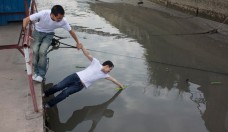
A few thoughts about
Zhou Tao’s “Collector(s)”
Reflecting on our recent co-presentation with Reel Asian Film Festival, curator Siya Chen sat down with artist Reena Katz to share a few thoughts on a some of the work in the exhibition.

Beta
Temporarily relieved of our lovely white cube, we’ve recently launched our new project space – TPW R&D – and its project website. The emphasis of my work for 2012-2013 is ramping up the demand for a critical relationship between showing and thinking.
Ame Henderson
Reflections on Public Recordings’ Public Events
In collaboration with TPW R&D, my research intersected with a public space, during two consecutive evenings in early October.